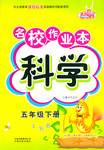题目内容
So clearly _____ English that he can always make himself understood
- A.does he speak
- B.he speaks
- C.did he speak
- D.he spoke
考察倒装句。So+adj/adv放在句首,后面使用部分倒装的形式。根据后面的can可知本题使用现在时,故A正确。

 一卷搞定系列答案
一卷搞定系列答案 名校作业本系列答案
名校作业本系列答案 轻巧夺冠周测月考直通名校系列答案
轻巧夺冠周测月考直通名校系列答案任务型阅读 (共10小题;每小题1分,满分10分)
请认真阅读下列短文,并根据所读内容在文章后表格中的空格里填入一个最恰当的单词。
注意:每个空格只填1个单词。请将答案写在答题卡上相应题号的横线上。
Waste to Energy—JUST BURN IT!
WHY BURN WASTE?
Waste-to-energy plants generate (产生) enough electricity to supply 2.4 million households in the US. But, providing electricity is not the major advantage of waste-to-energy plants. In fact, it costs more to generate electricity at a waste-to-energy plant than it does at a coal, nuclear, or hydropower plant.
The major advantage of burning waste is that it considerably reduces the amount of trash going to landfills. The average American produces more than 1,600 pounds of waste a year. If all this waste were landfilled, it would take more than two cubic yards of landfill space. That’s the volume of a box three feet long, three feet wide, and six feet high. If that waste were burned, the ashes would fit into a box three feet long, three feet wide, but only nine inches high!
Some communities in the Northeast may be running out of land for new landfills. And, since most people don’t want landfills in their backyards, it has become more difficult to obtain permits to build new landfills. Taking the country as a whole, the United States has plenty of open space, of course, but it is expensive to transport garbage a long distance to put it into a landfill.
TO BURN OR NOT TO BURN?
Some people are concerned that burning garbage may harm the environment. Like coal plants, waste-to-energy plants produce air pollution when the fuel is burned to produce steam or electricity. Burning garbage releases the chemicals and substances found in the waste. Some chemicals can be a threat to people, the environment, or both, if they are not properly controlled.
Some critics of waste-to-energy plants are afraid that burning waste will hamper (妨碍,阻碍) recycling programs. If everyone sends their trash to a waste-to-energy plant, they say, there will be little motive to recycle. Several states have considered or are considering banning waste-to-energy plants unless recycling programs are in place. Massachusetts, New Jersey, and New York City have delayed new waste-to-energy plants, hoping to increase the level of recycling first.
So, what’s the real story? Can recycling and burning waste coexist? At first glance, recycling and waste-to-energy seem to be at odds (不一致), but they can actually complement (弥补) each other. That’s because it makes good sense to recycle some materials, and better sense to burn others.
Let’s look at aluminum, for example. Aluminum mineral is so expensive to mine that recycling aluminum more than pays for itself. Burning it produces no energy. So clearly, aluminum is valuable to recycle and not useful to burn.
Paper, on the other hand, can either be burned or recycled—it all depends on the price the used paper will bring.
Plastics are another matter. Because plastics are made from petroleum and natural gas, they are excellent sources of energy for waste-to-energy plants. This is especially true since plastics are not as easy to recycle as steel, aluminum, or paper. Plastics almost always have to be hand sorted and making a product from recycled plastics may cost more than making it from new materials.
To burn or not to burn is not really the question. We should use both recycling and waste-to-energy as alternatives to landfilling.
Waste to Energy—JUST BURN IT!
| WHY BURN WASTE? | Advantages of waste to Energy | ◆Though at a high (71) _______, waste-to-energy plants can produce enough electricity for 2.4 million US households. ◆Burning waste can (72) _______ a considerable amount of trash going to landfills. |
| (73)_______ for landfilling | ◆Some communities (74) _______ land for new landfills. ◆Most people refuse to build landfills around. ◆Building landfills in far-away areas will increase the cost of (75) _______ garbage. | |
| TO BURN OR NOT TO BURN? | (76) __________ about burning garbage | ◆Burning garbage releases chemicals, which, if not properly controlled, can be (77) _______ to people and the environment. ◆Burning garbage will hamper recycling programs. |
| Coexistence of recycling and burning waste | Recycling and waste-to-energy can go well with each other in that some materials like aluminum are fit to recycle, while others like plastics are fit to (78) _______. | |
| (79)__________ | Whether to burn or not to burn, we should (80) _______ landfilling with both recycling and waste-to-energy to deal with garbage. | |
任务型阅读 (共10小题;每小题1分,满分10分)
请认真阅读下列短文,并根据所读内容在文章后表格中的空格里填入一个最恰当的单词。
注意:每个空格只填1个单词。请将答案写在答题卡上相应题号的横线上。
Waste to Energy—JUST BURN IT!
WHY BURN WASTE?
Waste-to-energy plants generate (产生) enough electricity to supply 2.4 million households in the US. But, providing electricity is not the major advantage of waste-to-energy plants. In fact, it costs more to generate electricity at a waste-to-energy plant than it does at a coal, nuclear, or hydropower plant.
The major advantage of burning waste is that it considerably reduces the amount of trash going to landfills. The average American produces more than 1,600 pounds of waste a year. If all this waste were landfilled, it would take more than two cubic yards of landfill space. That’s the volume of a box three feet long, three feet wide, and six feet high. If that waste were burned, the ashes would fit into a box three feet long, three feet wide, but only nine inches high!
Some communities in the Northeast may be running out of land for new landfills. And, since most people don’t want landfills in their backyards, it has become more difficult to obtain permits to build new landfills. Taking the country as a whole, the United States has plenty of open space, of course, but it is expensive to transport garbage a long distance to put it into a landfill.
TO BURN OR NOT TO BURN?
Some people are concerned that burning garbage may harm the environment. Like coal plants, waste-to-energy plants produce air pollution when the fuel is burned to produce steam or electricity. Burning garbage releases the chemicals and substances found in the waste. Some chemicals can be a threat to people, the environment, or both, if they are not properly controlled.
Some critics of waste-to-energy plants are afraid that burning waste will hamper (妨碍,阻碍) recycling programs. If everyone sends their trash to a waste-to-energy plant, they say, there will be little motive to recycle. Several states have considered or are considering banning waste-to-energy plants unless recycling programs are in place. Massachusetts, New Jersey, and New York City have delayed new waste-to-energy plants, hoping to increase the level of recycling first.
So, what’s the real story? Can recycling and burning waste coexist? At first glance, recycling and waste-to-energy seem to be at odds (不一致), but they can actually complement (弥补) each other. That’s because it makes good sense to recycle some materials, and better sense to burn others.
Let’s look at aluminum, for example. Aluminum mineral is so expensive to mine that recycling aluminum more than pays for itself. Burning it produces no energy. So clearly, aluminum is valuable to recycle and not useful to burn.
Paper, on the other hand, can either be burned or recycled—it all depends on the price the used paper will bring.
Plastics are another matter. Because plastics are made from petroleum and natural gas, they are excellent sources of energy for waste-to-energy plants. This is especially true since plastics are not as easy to recycle as steel, aluminum, or paper. Plastics almost always have to be hand sorted and making a product from recycled plastics may cost more than making it from new materials.
To burn or not to burn is not really the question. We should use both recycling and waste-to-energy as alternatives to landfilling.
Waste to Energy—JUST BURN IT!
|
WHY BURN WASTE? |
Advantages of waste to Energy |
◆Though at a high (71) _______, waste-to-energy plants can produce enough electricity for 2.4 million US households. ◆Burning waste can (72) _______ a considerable amount of trash going to landfills. |
|
(73)_______ for landfilling |
◆Some communities (74) _______ land for new landfills. ◆Most people refuse to build landfills around. ◆Building landfills in far-away areas will increase the cost of (75) _______ garbage. |
|
|
TO BURN OR NOT TO BURN? |
(76) __________ about burning garbage |
◆Burning garbage releases chemicals, which, if not properly controlled, can be (77) _______ to people and the environment. ◆Burning garbage will hamper recycling programs. |
|
Coexistence of recycling and burning waste |
Recycling and waste-to-energy can go well with each other in that some materials like aluminum are fit to recycle, while others like plastics are fit to (78) _______. |
|
|
(79)__________ |
Whether to burn or not to burn, we should (80) _______ landfilling with both recycling and waste-to-energy to deal with garbage. |